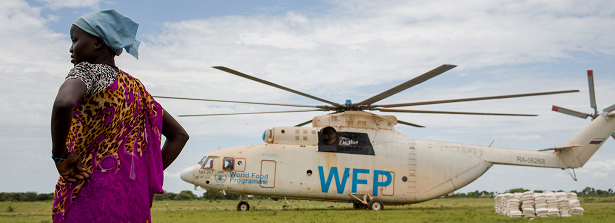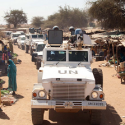Lessons on market-oriented food security programming in fragile settings

As part of an ongoing study on “Aid transitions in fragility and protracted crisis settings” two quick-scans were produced. The first inventories typologies and frameworks used to design agricultural development programmes in fragile settings. The second captures lessons on market-oriented food security programming in fragile settings. The reports are the first in a series of three that aim to provide insights into how aid actors are currently working on the Humanitarian-Development-Peace (HDP) nexus in practice.
| Documents to download |
Global trends predict that in the future extreme poverty and hunger will increasingly be concentrated in fragile and conflict-affected settings. The Dutch policy shift towards fragile and unstable regions surrounding Europe anticipates this change with a focus on preventative action, as described in the Policy Note “Investing in Global Prospects”. Transitioning from humanitarian programming to long-term, development-oriented programming in fragile settings is an important part of this shift. The recent OECD-DAC Recommendation on the humanitarian-development-peace (HDP) nexus phrases it as “prevention always, development wherever possible, humanitarian action when necessary”. The need and opportunity to work in fragile settings is thus clear, but to increase investment for market-oriented interventions in such areas, better insight into what works and does not work under what circumstances is needed.
In preparation for a series of interviews with practitioners these quick-scans aim to help clarify what is known about how the transition from humanitarian to development programming can be supported most effectively, and what market-based interventions are feasible amid (different types of) fragility.
Quick-scan 1: Typologies for agricultural development in fragile settings
This quick-scan inventories models, frameworks, or typologies that can contribute to the planning and designing of agricultural development interventions in fragile settings. Additionally it provides insight into the different ways in which frameworks conceptualize fragility. Such frameworks can be used to set policy priorities, design interventions, and make critical choices about geography, targeting and management. They can help to identify opportunities and decrease risk as they represent lessons from experience captured in systematic approaches. In fragile countries one setting might be relatively stable, while another is in crisis. By differentiating between these varied circumstances this scan aimed to highlight opportunities in fragile settings, rather than risks alone.
Quick-scan 2: Lessons of market-oriented programmes in fragile settings
This quick-scan inventories experiences of initiatives to promote food security (humanitarian, resilience, livelihoods and market-based development projects) in fragile and protracted crisis situations. It maps what information is currently available in openly accessible evaluations, case studies, and other reports that either document experiences of interventions or provide analysis on the enabling environment for food security interventions in fragile settings. In particular it focuses on market-oriented approaches in humanitarian or resilience interventions, on the promotion of agribusiness and agricultural value chain approaches in crisis-affected and fragile settings, factors that are conducive or prohibitive for these interventions (enabling environment) and the necessary market conditions for (small-scale) agribusiness to be effectively supported amid fragility and crisis.






